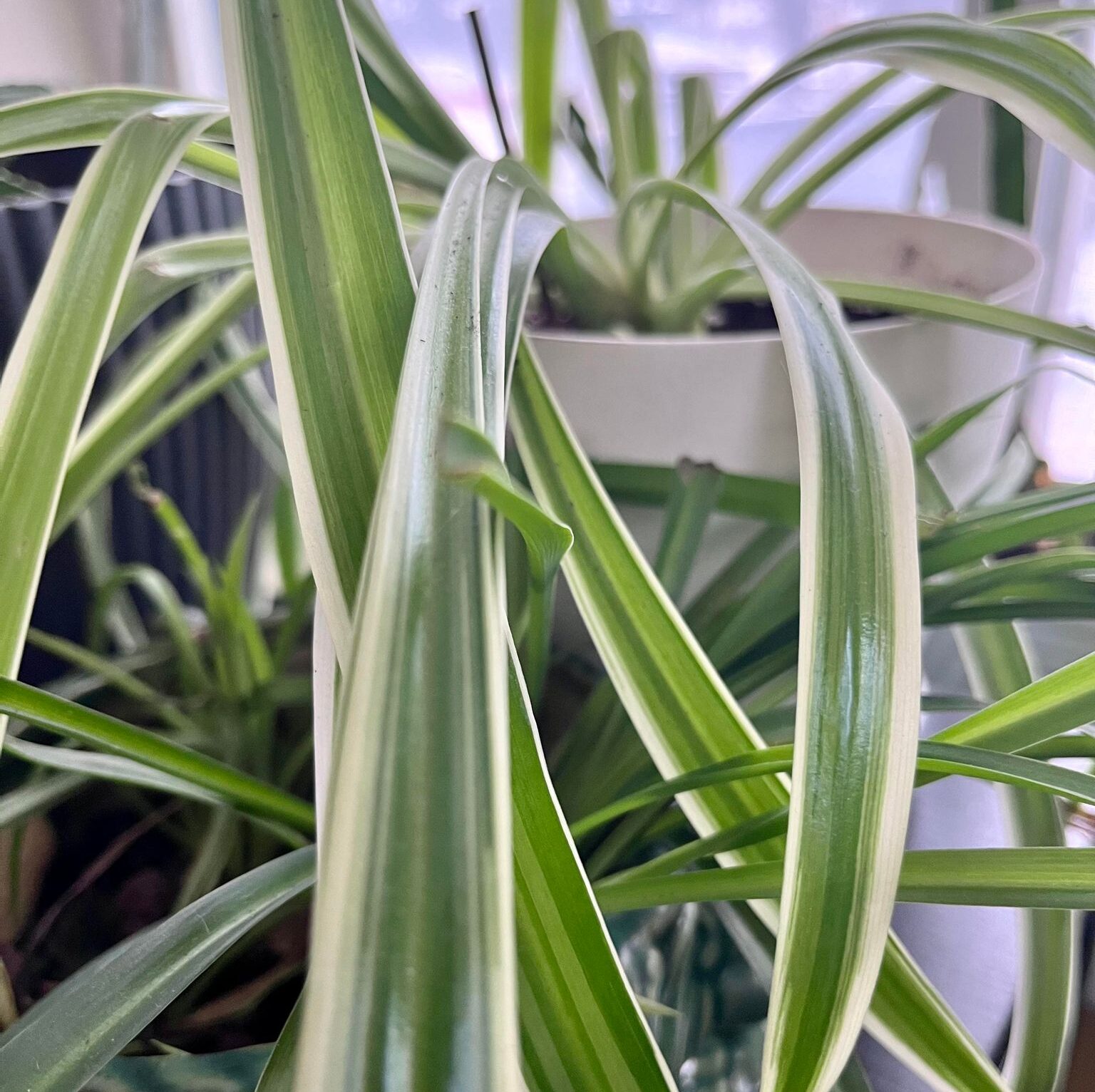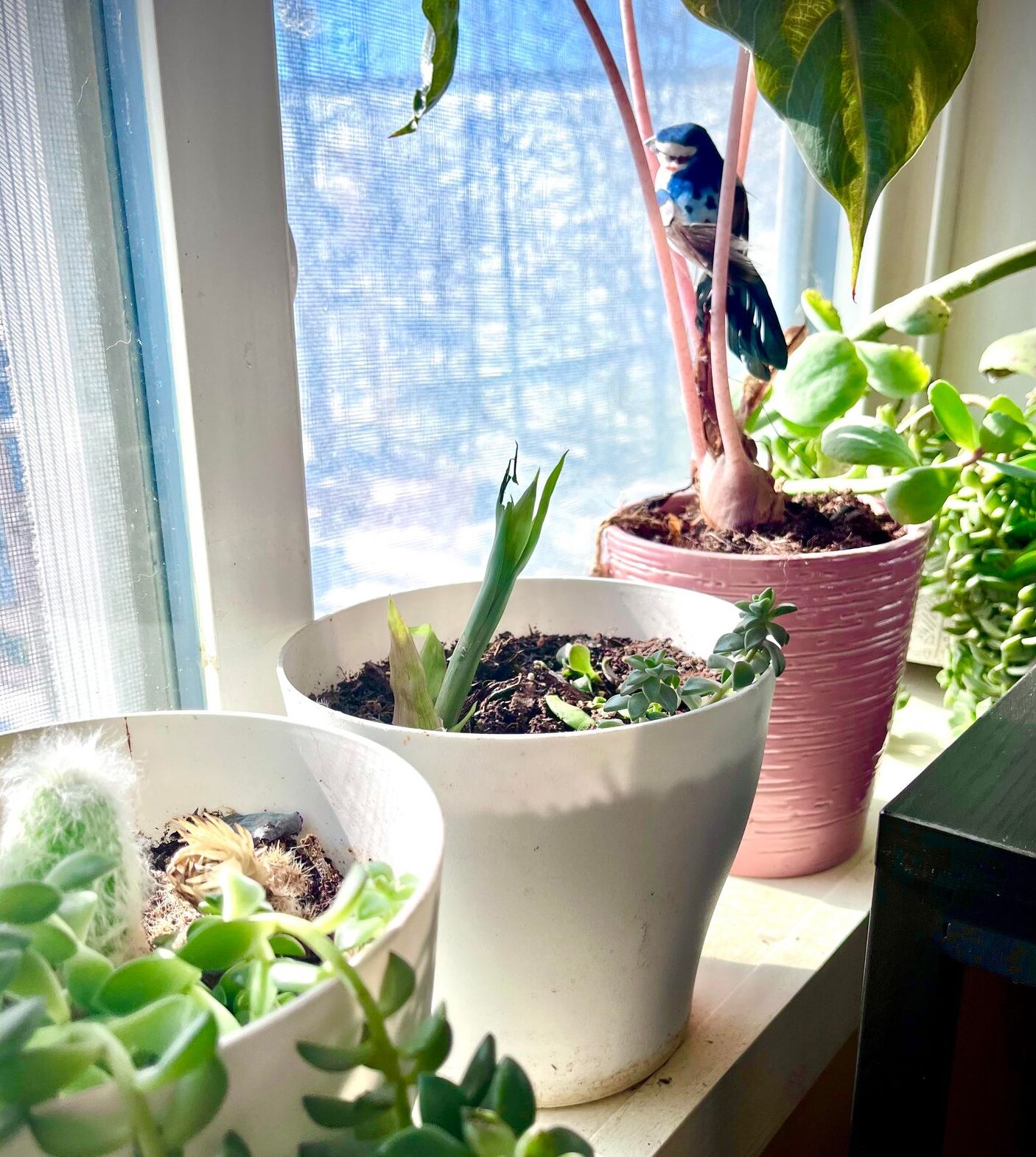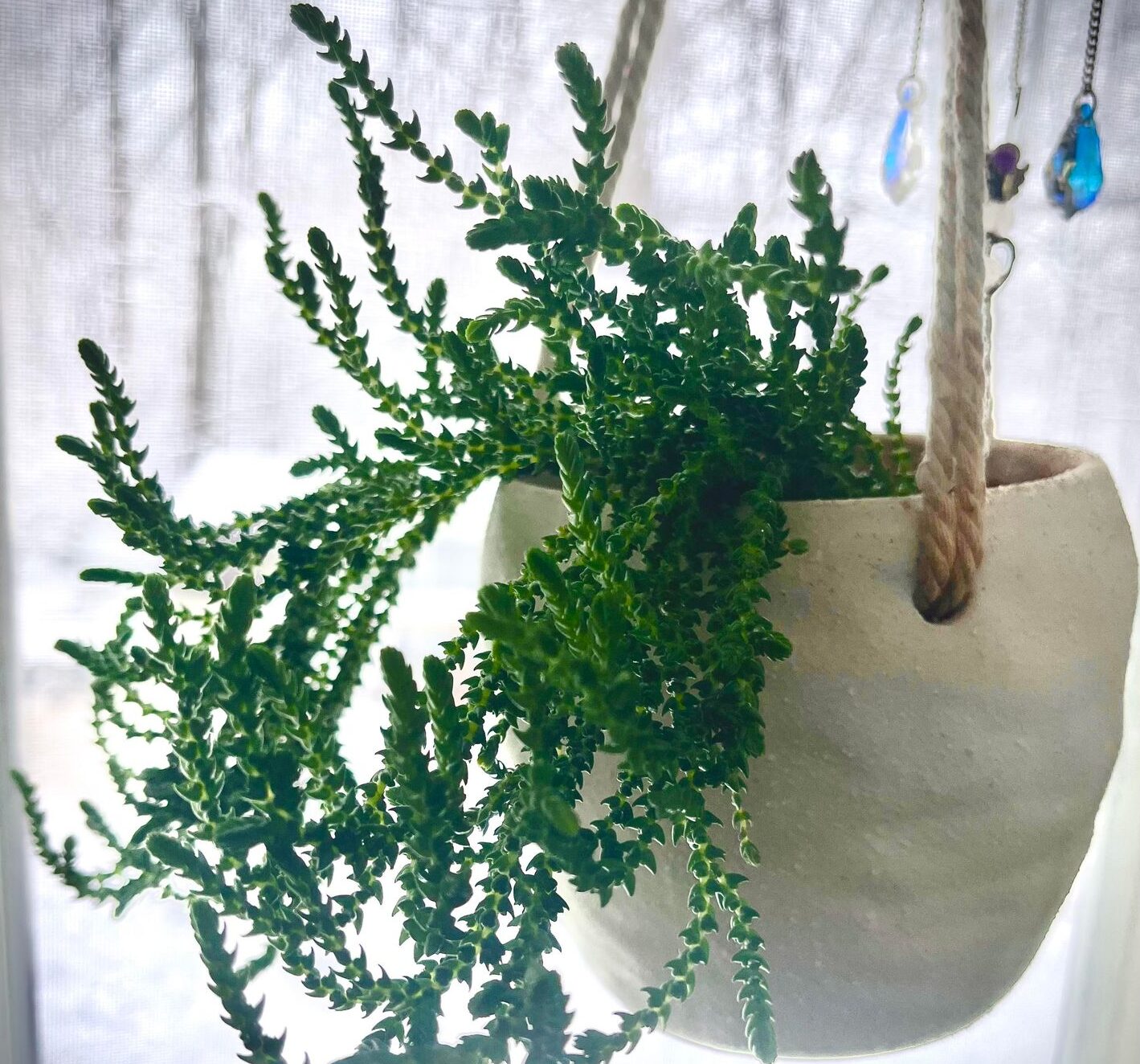
Window Haworthia Succulent Care and Propagation Guide
Window Haworthia Succulent Care and Propagation Guide
Welcome to the world of indoor gardening, where green thumbs and succulent enthusiasts unite! If you’re an aspiring plant parent looking to add a touch of elegance to your home or workspace, you’re in for a treat. In this comprehensive guide, we’ll delve into the enchanting realm of Window Haworthia Succulents—a delightful addition to any indoor garden.
What is a Window Haworthia Succulent?
With their striking appearance and low-maintenance nature, Window Haworthias are a favorite among succulent aficionados. These charming plants, hailing from the family of Haworthiopsis, are known for their rosette-shaped clusters of fleshy, pointy leaves. Their unique charm lies in their ability to thrive on your windowsill, adding a touch of natural beauty to even the smallest of spaces.
Why Care and Propagate Window Haworthias?
But this guide isn’t just about admiring these beauties from afar. We’re here to help you become the best plant parent you can be by offering insights into their care and propagation. By the end of this journey, you’ll possess the knowledge and skills to nurture these succulents to their fullest potential.
So, whether you’re a seasoned gardener or a beginner looking to embrace the world of indoor greenery, let’s embark on this exciting journey together. Get ready to uncover the secrets of Window Haworthia Succulent care and propagation that will turn your indoor garden into a thriving oasis of natural beauty. Let’s dig in!
Getting to Know the Window Haworthia Succulent
If you’re considering adding a Window Haworthia Succulent to your indoor garden, it’s important to get acquainted with this captivating plant. In this section, we’ll explore the unique features and characteristics that make Window Haworthias a standout choice for indoor gardening.
Describe the Window Haworthia Succulent’s Appearance
Window Haworthias are like living sculptures, designed by nature to be both visually intriguing and adaptable to indoor environments. Here’s a closer look at their appearance:
- Rosette Formation: These succulents grow in tight, symmetrical rosettes. Picture a stunning spiral of leaves, gracefully spiraling outward from a central point.
- Leaf Structure: The leaves are fleshy and triangular, often featuring intricate patterns of stripes, spots, or raised ridges. In addition to their visual appeal, these patterns add to their appeal.
- Size: Window Haworthias are typically small, making them ideal for indoor spaces. They usually reach a height of 2 to 6 inches, with a similar spread.
- Color Variations: Depending on the species or variety, you can find Window Haworthias in various shades of green. Some even have translucent “windows” on their leaves, giving them their name.
Highlight its Unique Features and Characteristics
Now that you have an idea of how they look, let’s delve into what makes Window Haworthias truly special:
- Adaptability: Window Haworthias are resilient and can thrive in a variety of indoor conditions. They’re excellent companions for those new to succulent care.
- Low Maintenance: These succulents are known for their ability to thrive with minimal attention. It is drought-tolerant and can withstand neglect for long periods of time.
- Ideal for Small Spaces: Their compact size and striking appearance make them perfect for apartments, offices, or any space where you want to add a touch of greenery without overwhelming the area.
- Air-Purifying Qualities: Like many indoor plants, Window Haworthias contribute to improving indoor air quality by absorbing pollutants and releasing oxygen.
- Non-Toxic: If you have curious pets or children, you’ll be glad to know that Window Haworthias are non-toxic, making them safe to have around.
Intrigued by these charming succulents yet? In the next sections, we’ll guide you through the care and propagation of Window Haworthias, so you can keep these unique plants thriving in your indoor garden.
Window Haworthia Succulent Care
Caring for Window Haworthia Succulents is a rewarding experience that doesn’t require a green thumb. In this section, we’ll cover the essential aspects of their care, ensuring that your succulents flourish in their indoor habitat.
Location and Lighting
- Optimal Placement Near Windows: Window Haworthias thrive in bright, indirect sunlight. Place them near a window that receives filtered light, such as a sheer curtain, or a few feet away from a south or west-facing window. This gentle exposure ensures they get the light they need without scorching their delicate leaves.
- Indirect Sunlight for Best Growth: While they love light, avoid placing them in direct sunlight, as this can lead to sunburn and leaf damage. If you notice their leaves turning brown or white, it’s a sign they’re getting too much sun.
Potting and Soil
- Choosing the Right Pot and Potting Mix: Select a pot with drainage holes to prevent water from pooling at the bottom. Well-draining soil is crucial for Window Haworthias. A mix of cactus or succulent potting soil with added perlite or sand provides the ideal medium.
- Ensuring Proper Drainage: Overwatering is a common pitfall. Ensure your pot has adequate drainage to prevent waterlogged soil, which can lead to root rot. Empty the saucer under the pot after watering to prevent stagnant water.
Watering
- Importance of a Watering Schedule: Window Haworthias prefer a “soak and dry” watering method. Water thoroughly when the top inch of soil is dry, but allow excess water to drain away. Water less frequently during the winter months when their growth slows.
- Signs of Overwatering and Underwatering: Keep an eye on your succulent leaves. If they start to pucker or wrinkle, it’s a sign they need more water. On the other hand, if they become soft and translucent, you might be overwatering. Adjust your watering routine accordingly.
Temperature and Humidity
- Ideal Temperature Range: Window Haworthias are comfortable in typical indoor temperatures, ideally between 65°F to 80°F (18°C to 27°C). Avoid exposing them to extreme cold drafts or hot, dry conditions.
- Managing Humidity Levels: They tolerate average indoor humidity levels well. However, if you live in an extremely dry climate, consider using a humidity tray or occasional misting to provide a bit more moisture.
By following these care guidelines, you’ll create a nurturing environment for your Window Haworthia Succulents. In the next section, we’ll discuss how to maintain their appearance and health, ensuring they remain a delightful addition to your indoor garden.
Maintenance Tips
Keeping your Window Haworthia Succulents in top-notch condition not only ensures their health but also enhances their visual appeal. In this section, we’ll explore essential maintenance tasks that will help you maintain these charming succulents.
Pruning and Grooming
- Removing Dead or Damaged Leaves: Regularly inspect your Window Haworthias for any dead or withered leaves. Gently pluck them from the base using clean, sharp scissors or tweezers. This not only tidies up the appearance but also promotes healthy growth.
- Promoting a Compact and Attractive Shape: To encourage a bushier appearance, consider pinching or trimming the tips of the succulent’s rosettes. This practice helps maintain a pleasing symmetry and prevents leggy growth.
Fertilizing
- Selecting the Right Fertilizer: During the growing season (typically spring and summer), you can fertilize your Window Haworthias. Use a balanced, diluted succulent fertilizer or a specialized cactus fertilizer. On the fertilizer label, follow the recommended dosage.
- Frequency and Timing of Fertilization: Fertilize your succulents sparingly, approximately once every 4-6 weeks during the active growing season. Avoid fertilizing during the dormant winter months when they require less nutrients.
Remember that Window Haworthias don’t require excessive attention. These maintenance tasks are simple yet effective in ensuring your succulents remain healthy and vibrant.
In the next section, we’ll dive into the fascinating world of Window Haworthia Succulent propagation, giving you the skills to expand your succulent collection and share the beauty of these plants with others.
Window Haworthia Succulent Propagation
Propagating your Window Haworthia Succulents can be an exciting and rewarding way to expand your indoor garden or share these beautiful plants with friends and family. In this section, we’ll explore various propagation methods, each with its unique charm.
Overview of Propagation Methods
Before diving into specific techniques, it’s essential to understand the two primary methods of propagating Window Haworthias:
- Leaf Cuttings: This method involves taking healthy leaves from the parent plant and encouraging them to grow roots and develop into new plants.
- Offsets (Pups): Window Haworthias produce offsets, also known as “pups,” around the base of the parent plant. These small rosettes can be separated and potted individually to create new plants.
Leaf Cuttings
Leaf cuttings are a popular way to propagate Window Haworthias and are relatively straightforward. Here’s a step-by-step guide:
- Select a Healthy Leaf: Choose a healthy leaf from the parent plant. Ensure it’s plump and free from any damage or disease.
- Let the Leaf Callus: Allow the cut end of the leaf to dry and form a callus. This typically takes a day or two and helps prevent rot when you plant the cutting.
- Plant the Leaf Cutting: Plant the callused end of the leaf in a well-draining succulent or cactus potting mix. Insert it about half an inch into the soil.
- Water Sparingly: Water the cutting lightly, just enough to moisten the soil. Avoid overwatering, as too much moisture will rot the plant.
- Provide Indirect Light: Direct sunlight is best for the pot. Avoid direct sunlight until the cutting establishes roots, which can take several weeks to months.
- Wait for Growth: Be patient as your leaf cutting starts to develop roots and eventually a new rosette. Once it’s well-established, treat it like a mature Window Haworthia.
Offsets (Pups)
Propagation through offsets is even easier, as these mini-rosettes are essentially baby plants ready to grow on their own. Here’s how to do it:
- Identify and Separate Offsets: Gently inspect the base of the parent plant for offsets or pups. These will look like miniature rosettes growing alongside the main plant.
- Gently Remove Offsets: Carefully remove the offsets by gently tugging or using clean scissors or pruning shears. Ensure you include a bit of the stem with the pup.
- Allow Callusing: Just like with leaf cuttings, let the cut ends of the offsets callus for a day or two to prevent rot.
- Plant the Offsets: Plant the callused ends of the offsets in their own pots with well-draining soil.
- Provide Care: Water the newly potted offsets sparingly and place them in indirect sunlight. As they grow, treat them like mature Window Haworthias.
Propagation is a delightful way to share the beauty of Window Haworthias and continue their legacy in your indoor garden. With patience and care, you’ll soon have a collection of these captivating succulents to admire and nurture.
Common Issues and Troubleshooting
Even with the best care, challenges can arise when caring for Window Haworthia Succulents. In this section, we’ll address common issues that succulent enthusiasts may encounter and provide solutions to keep your plants healthy and thriving.
Dealing with Pests and Diseases
- Identification and Prevention:
- Pests: Keep an eye out for common succulent pests like mealybugs, aphids, and spider mites. Regularly inspect your plants to catch infestations early.
- Prevention: Maintain good plant hygiene, avoid overwatering, and quarantine new plants to prevent introducing pests. Isolate affected plants promptly.
- Treatment Options:
- Natural Remedies: For minor infestations, consider using natural solutions like neem oil or insecticidal soap. The product instructions should be followed when applying these treatments.
- Chemical Treatments: For severe infestations, you may need to resort to chemical pesticides, but use them sparingly and follow the instructions carefully.
Addressing Growth Problems
- Leggy or Stretched Succulents:
- Cause: Insufficient light is the most common cause of leggy growth. When Window Haworthias don’t receive enough light, they stretch to reach for more.
- Solution: Move your succulent to a spot with better indirect sunlight. Prune any stretched-out stems to encourage a more compact growth pattern.
- Yellowing or Browning Leaves:
- Cause: Overwatering is often the culprit behind discolored leaves. Waterlogged roots can lead to rot and leaf damage.
- Solution: Adjust your watering habits and allow the soil to dry out more between watering sessions. If root rot is suspected, trim away affected roots and repot in fresh soil.
- Drooping or Wilting:
- Cause: Underwatering or lack of humidity can cause Window Haworthias to wilt.
- Solution: Increase your watering frequency and consider using a humidity tray or misting to raise humidity levels if necessary.
Remember, succulents are resilient, and early intervention is key to resolving issues. Regular observation and adjustments to your care routine will help your Window Haworthia Succulents remain vibrant and robust.
In the concluding section of this guide, we’ll summarize the key takeaways and encourage you to embark on your journey as a successful Window Haworthia Succulent caretaker.
Recommended Products for Your Window Haworthia Succulent Care
- Window Haworthia Succulent: Of course, the star of the show is the Window Haworthia Succulent itself! You can find these charming plants in various species and varieties, each with its unique leaf patterns and characteristics. They make an excellent addition to your indoor garden with their low-maintenance nature and striking appearance.
- Succulent Potting Mix: To provide your Window Haworthia with the ideal growing medium, consider using a high-quality succulent potting mix. Look for one that has excellent drainage properties to prevent overwatering.
- Ceramic Succulent Pots: Elevate the aesthetics of your succulent display with stylish ceramic pots. These pots not only provide a beautiful contrast to the succulent’s greenery but also ensure good airflow to the roots.
- Indoor Plant Grow Light: If your indoor space lacks ample natural light, an indoor plant grow light can be a lifesaver. LED grow lights are energy-efficient and provide the right spectrum of light for your succulents to thrive.
- Succulent Fertilizer: To keep your Window Haworthia Succulent healthy and thriving, use a specialized succulent or cactus fertilizer. It provides the essential nutrients your succulents need during their growing season.
- Pruning Shears: Pruning shears are handy tools for maintaining the shape and health of your succulents. They allow you to trim away dead or overgrown leaves with precision.
- Humidity Tray: If you live in a dry climate or your indoor space lacks humidity, a humidity tray can help create a more suitable environment for your succulents. It provides a consistent level of moisture in the air, preventing wilting and dryness.
- Insecticidal Soap: As a precaution against pests like mealybugs and spider mites, having insecticidal soap on hand is a smart move. It can effectively treat minor infestations without harming your succulents.
- Succulent Identification Book: If you’re a succulent enthusiast looking to expand your collection, a comprehensive succulent identification book can be a valuable resource. It helps you learn more about different succulent species and their care requirements.
- Digital Soil Moisture Meter: For those who are new to succulent care, a soil moisture meter is a handy gadget. It helps you determine when it’s time to water your Window Haworthia by measuring the moisture level in the soil accurately.
These recommended products will enhance your Window Haworthia Succulent care experience, making it easier and more enjoyable to nurture these delightful plants in your indoor garden.
Conclusion
Congratulations, dear plant enthusiast, on completing this comprehensive Window Haworthia Succulent Care and Propagation Guide! You’ve taken significant steps toward becoming a skilled succulent caretaker, and your indoor garden is sure to flourish with the knowledge you’ve gained.
Key Takeaways
To recap our journey through the world of Window Haworthia Succulents:
- Getting to Know Them: Window Haworthias are captivating succulents known for their rosette formation, unique leaf patterns, and adaptability to indoor environments.
- Caring for Them: Proper care includes providing the right amount of sunlight, well-draining soil, careful watering, and maintaining suitable temperature and humidity levels.
- Maintenance Tips: Regular pruning and grooming, along with mindful fertilization, will keep your succulents healthy and visually appealing.
- Propagation: You’ve learned two primary propagation methods: leaf cuttings and offsets (pups), empowering you to expand your succulent collection.
- Common Issues and Troubleshooting: Be prepared to address pests, diseases, and growth problems by identifying, preventing, and treating them effectively.
As you continue your indoor gardening journey with Window Haworthia Succulents, remember that each plant has its unique personality and needs. Don’t hesitate to experiment and adapt your care routine to meet their specific requirements.
The Joy of Succulent Care
Caring for succulents, like Window Haworthias, is not just about tending to plants; it’s about nurturing a sense of connection with nature within your living space. Watching these resilient beauties thrive and flourish can bring a sense of peace and satisfaction like no other.
Now, armed with the knowledge from this guide, you’re ready to embark on your journey as a dedicated succulent caretaker. So, go ahead, adorn your windowsills, desks, and living spaces with the elegance of Window Haworthia Succulents, and let their green presence inspire and refresh your daily life.
We hope this guide has been a valuable resource in your pursuit of indoor gardening excellence. If you have any questions or want to share your succulent journey, feel free to connect with us. Happy gardening, and may your Window Haworthia Succulents thrive and bring joy to your world!
Search
Popular Posts
-
Self-Watering Planters: Low-Maintenance Solutions for Busy Plant Parents
Self-Watering Planters In our fast-paced lives, plant enthusiasts, often referred to as “busy plant parents,” grapple with the challenge of providing optimal care to their indoor green companions. The act of watering, a crucial aspect of indoor plant care, becomes a daunting task when time is a luxury. Enter the game-changer: self-watering planters. These innovative…
-
Watch Chain Crassula Muscosa Care and Propagation Guide
Watch Chain Crassula Muscosa Indoor plants bring a special kind of joy to our homes. They add a touch of nature, making our living spaces more peaceful. I love watching each leaf grow and seeing how strong each stem can be. Today, let’s dive into the world of indoor succulents, focusing on a cool one…
Categories
Archives
Tags
air-purifying plants (2) Aloe Vera plant (1) botanical haven (1) busy plant parents (1) Carnivero collection (1) Carnivero Tropical Pitcher Plant (1) carnivorous plants (2) gardening advice (1) gardening tips (3) growing succulents (1) Houseplant care (2) houseplants (3) impact on indoor environments (1) indoor air quality (1) indoor gardening (5) Indoor plant care (3) indoor plant enthusiasts (1) indoor plants (1) indoor succulents (1) low-maintenance solutions (1) maintaining planters (1) nasa's clean air study (1) neon pothos care (1) neon pothos plant (1) Nepenthes care (1) photosynthesis (1) pitcher plant care (1) pitcher plant cultivation (1) plant care (3) planters on amazon (1) plant maintenance (1) plant mechanisms (1) plant parenting (2) plant propagation (4) propagating succulents (1) self-watering planters (1) Succulent care (3) succulent family (1) succulent haven (1) succulent identification (1) succulent tips (1) top-rated products (1) tropical pitcher plant (1) tropical plants (1) watch chain crassula (1)
















Leave a Reply